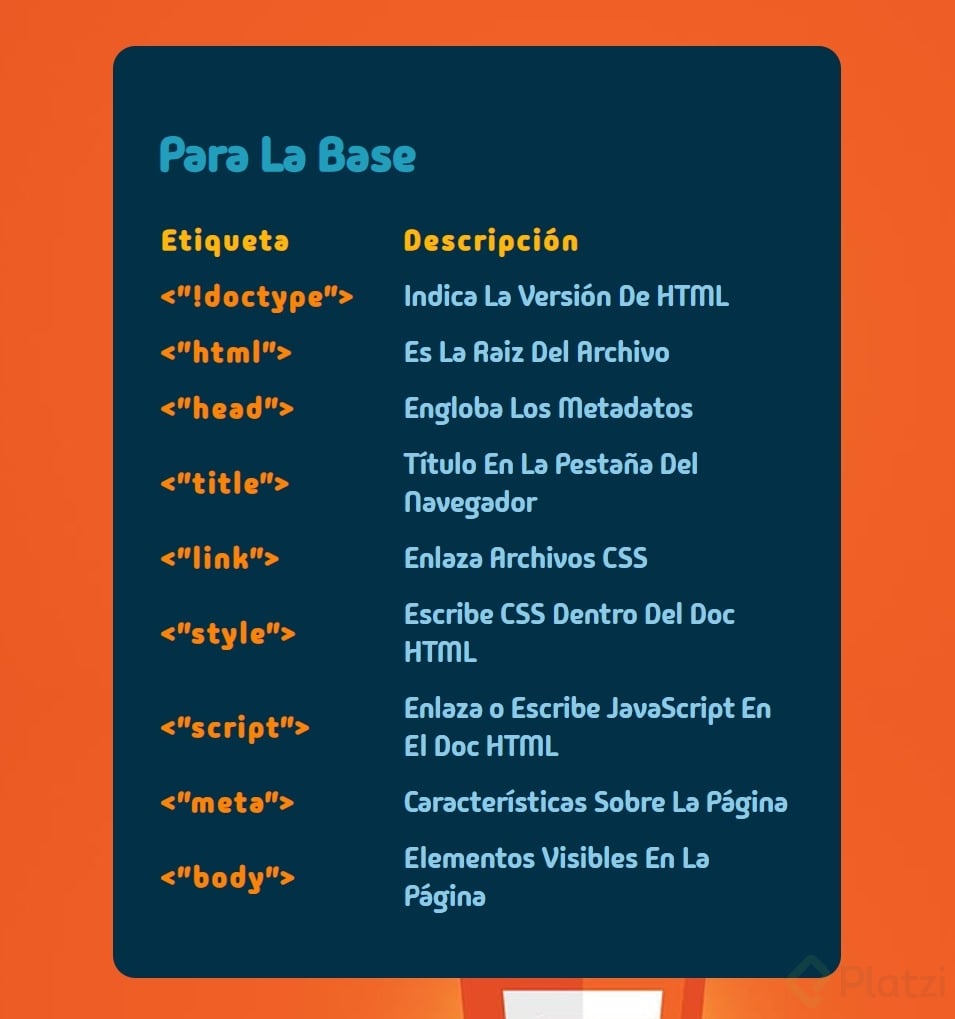En El Diseño Web, Las Tarjetas Son Un Elemento Visual Clave Para Organizar Y Presentar Información De Manera Clara Y Atractiva. A Través Del Uso De Etiquetas HTML, Es Posible Estructurar Contenido Dentro De Tablas Para Crear Tarjetas Personalizadas Que Se Adapten A Diferentes Necesidades. En Este Artículo, Exploraremos Cómo Crear Tarjetas Utilizando Tablas En HTML, Explicando Cada Una De Las Etiquetas Clave Que Intervienen En El Proceso.
Paso 1:
Comenzaremos Creando Una Estructura Html Con “Div” De Contenedor y “Table” Como Contenido
<body>
<div class="for-the-base">
<h1 style="color: #219ebc;">Para La Base</h1>
<table>
<tr>
<th class="label">Etiqueta</th>
<th class="description">Descripción</th>
</tr>
<tr>
<th><"!doctype"></th>
<td>Indica La Versión De HTML</td>
</tr>
<tr>
<th><"html"></th>
<td>Es La Raiz Del Archivo</td>
</tr>
<tr>
<th><"head"></th>
<td>Engloba Los Metadatos</td>
</tr>
<tr>
<th><"title"></th>
<td>Título En La Pestaña Del Navegador</td>
</tr>
<tr>
<th><"link"></th>
<td>Enlaza Archivos CSS</td>
</tr>
<tr>
<th><"style"></th>
<td>Escribe CSS Dentro Del Doc HTML</td>
</tr>
<tr>
<th><"script"></th>
<td>Enlaza o Escribe JavaScript En El Doc HTML</td>
</tr>
<tr>
<th><"meta"></th>
<td>Características Sobre La Página</td>
</tr>
<tr>
<th><"body"></th>
<td>Elementos Visibles En La Página</td>
</tr>
</table>
</div>
</body>
Paso 2:
Seguiremos Estilizando Los Elementos Del “Div” y Las “Tables”.
<style>
@import url('https://fonts.googleapis.com/css2?family=Barlow:ital,wght@0,100;0,200;0,300;0,400;0,500;0,600;0,700;0,800;0,900;1,100;1,200;1,300;1,400;1,500;1,600;1,700;1,800;1,900&family=Fira+Sans:wght@400;500;600;700;800&family=Madimi+One&family=Salsa&display=swap');
*{
font-family: "Madimi One", sans-serif;
box-sizing: border-box;
padding: 0;
}
body{
background-image: url(./img/FondoHTML.jpg);
}
.for-the-base{
width: 70%;
background-color: #023047;
border-radius: 15px;
padding: 30px;
margin: 50px auto;
}
table tr .label, .description{
color: #ffb703;
}
table tr .description{
color: #ffb703;
padding-left: 30px;
}
table tr th{
color: #fb8500;
letter-spacing: 2px;
text-align: start;
}
table tr td{
color: #8ecae6;
text-align: start;
padding-left: 30px;
}
table tr th, td{
font-size: 19px;
padding-bottom: 10px;
}
</style>
Paso 3:
y Así Se Vería El Resultado, Gracias 😃

Curso de Frontend Developer
COMPARTE ESTE ARTÍCULO Y MUESTRA LO QUE APRENDISTE




